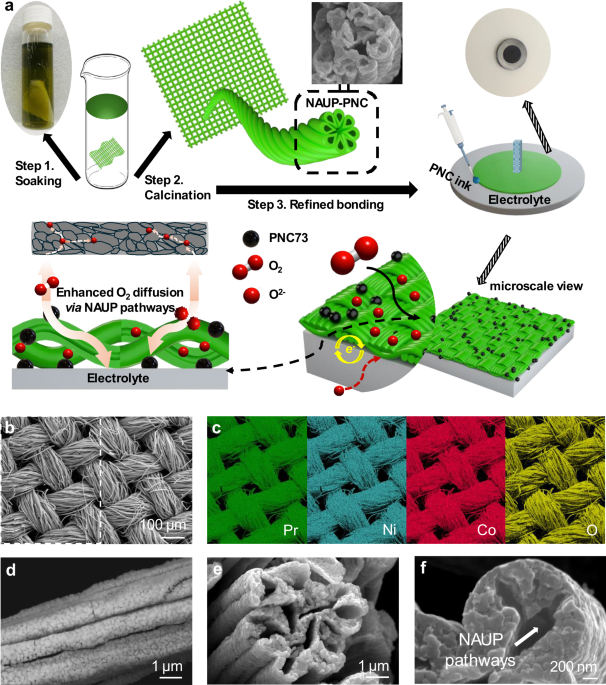Innovative Nanofiber-Architecture Ultra-Porous Electrodes for High-Efficiency Protonic Ceramic Electrochemical Cells
Key Ideas
- High-temperature solid oxide cells (SOCs) storing excess renewable energy as hydrogen have improved performance, stability, and cost-effectiveness.
- Protonic ceramic electrochemical cells (PCECs) operating at lower temperatures show enhanced reliability, energy efficiency, and cost-effectiveness for hydrogen production or electricity generation.
- Development of triple conducting oxides like BCFZY, PBSCF, PNO, and PNC electrodes has demonstrated superior performance at reduced temperature ranges benefiting from proton conduction.
- A novel nanofiber-architecture ultra-porous (NAUP) electrode design integrates ultra-fine nanoparticles and hollow gas pathways for enhanced surface activity, mass transfer, and stability, leading to improved electrochemical performance.
High-temperature solid oxide cells (SOCs) have shown promise for reversible fuel cell and electrolysis applications due to their energy efficiency. Recent advancements in conventional SOCs have improved performance and stability but face challenges due to high operating temperatures. Protonic ceramic electrochemical cells (PCECs) offer a lower-temperature alternative with enhanced reliability and cost-effectiveness for hydrogen production or electricity generation. Development of triple conducting oxides like BCFZY, PBSCF, PNO, and PNC electrodes has shown superior performance at reduced temperatures due to proton conduction. The article discusses the importance of electrode composition, morphology, and interfacial bonding for durable PCEC operation. To address challenges, a novel nanofiber-architecture ultra-porous (NAUP) electrode has been developed, integrating ultra-fine nanoparticles and hollow gas pathways to enhance surface activity, mass transfer, and stability. The NAUP electrode's design facilitates efficient mass transfer and catalytic activity, leading to improved electrochemical performance with reduced activation energy, minimized polarization resistance, and enhanced current density. The unique triple-conducting nature of the PNC material in the NAUP electrode ensures efficient surface reactions and bulk transport, enhancing reaction efficiency under practical conditions.
Topics
Fuel Cells
Production
Renewable Energy
Innovation
Energy Efficiency
Nanotechnology
Electrochemistry
Material Science
Electricity Generation
Latest News
